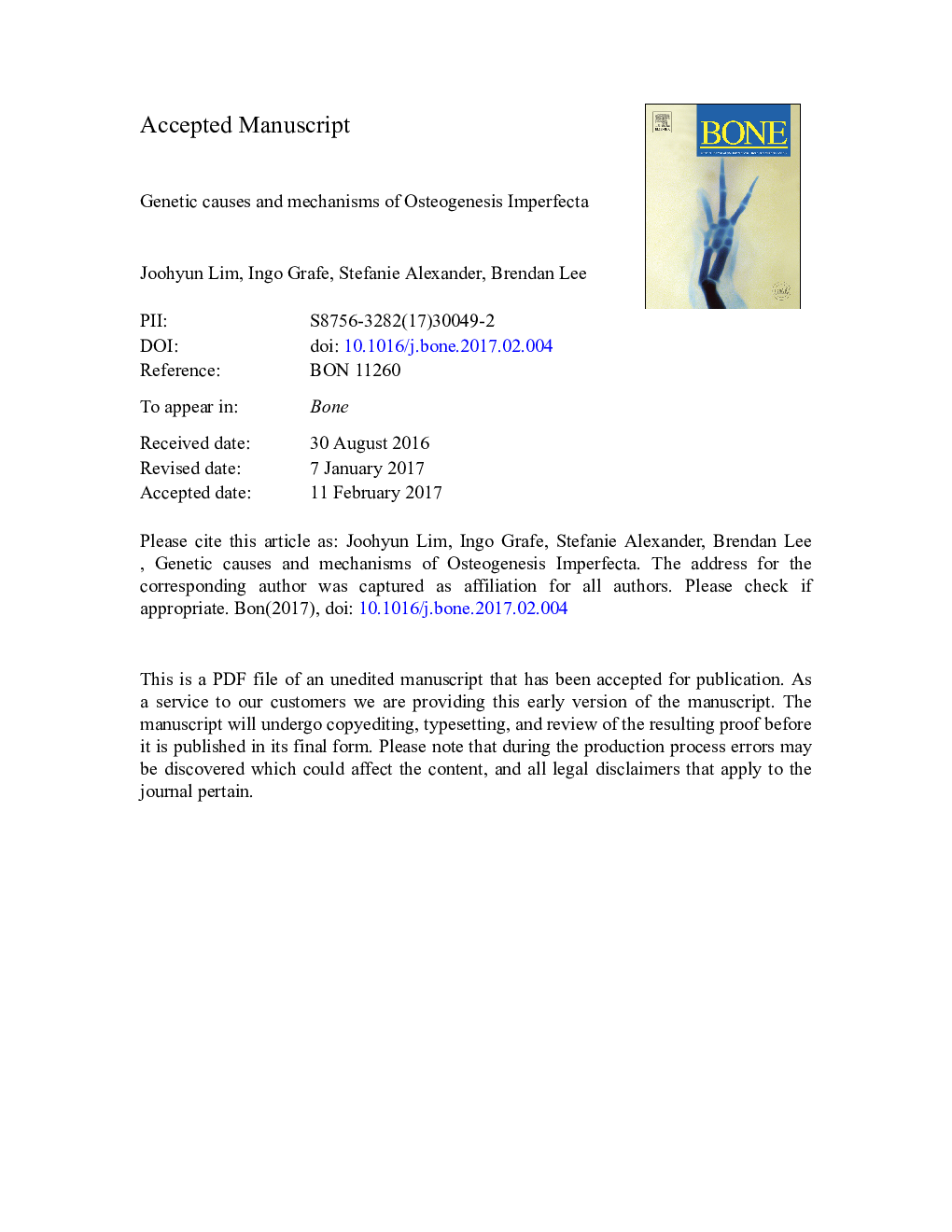| Article ID | Journal | Published Year | Pages | File Type |
|---|---|---|---|---|
| 5585312 | Bone | 2017 | 39 Pages |
Abstract
Osteogenesis Imperfecta (OI) is a genetic disorder characterized by various clinical features including bone deformities, low bone mass, brittle bones, and connective tissue manifestations. The predominant cause of OI is due to mutations in the two genes that encode type I collagen. However, recent advances in sequencing technology has led to the discovery of novel genes that are implicated in recessive and dominant OI. These include genes that regulate the post-translational modification, secretion and processing of type I collagen as well as those required for osteoblast differentiation and bone mineralization. As such, OI has become a spectrum of genetic disorders informing about the determinants of both bone quantity and quality. Here we summarize the known genetic causes of OI, animal models that recapitulate the human disease and mechanisms that underlie disease pathogenesis. Additionally, we discuss the effects of disrupted collagen networks on extracellular matrix signaling and its impact on disease progression.
Related Topics
Life Sciences
Biochemistry, Genetics and Molecular Biology
Developmental Biology
Authors
Joohyun Lim, Ingo Grafe, Stefanie Alexander, Brendan Lee,
